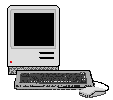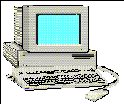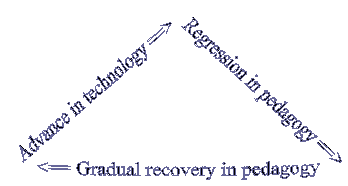 From
PLATO on the mainframe, with complex answer-judging and feedback, including
directing students to more exercises based on their answers
From
PLATO on the mainframe, with complex answer-judging and feedback, including
directing students to more exercises based on their answers to Apple IIe electronic workbooks with feedback like "Right, Juan" or "Try
again, Ahmed"
to Apple IIe electronic workbooks with feedback like "Right, Juan" or "Try
again, Ahmed" to early Macintosh 512K with graphics and sound, enabling more interesting
activities for language teaching
to early Macintosh 512K with graphics and sound, enabling more interesting
activities for language teaching to
IBM
PCs with DOS - back to electronic workbooks with feedback like "Right,
Juan" or "Try again, Ahmed" to
to
IBM
PCs with DOS - back to electronic workbooks with feedback like "Right,
Juan" or "Try again, Ahmed" to
slightly better Windows 3.1 (and sophisticated Macintosh language learning programs)
teachers could use interesting authoring tools
